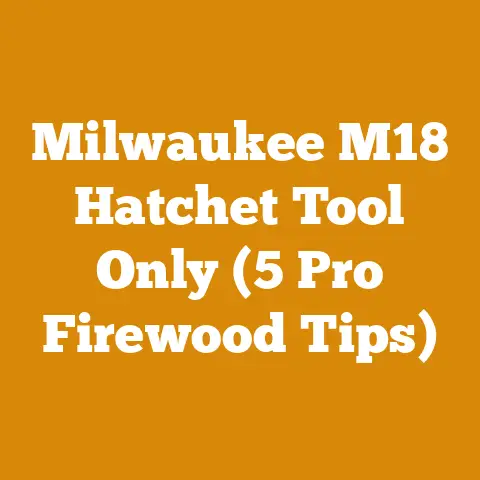Pine Shake Siding Costs (5 Pro Tips for Accurate Quotes)
The Allure of Natural Beauty: Pine Shake Siding Costs (5 Pro Tips for Accurate Quotes)
Imagine a secluded cabin nestled in the woods, its exterior adorned with the rustic charm of pine shake siding. That image is more than just a picturesque scene; it’s a testament to the enduring appeal of natural materials in home design. More and more homeowners are moving away from vinyl and composite siding, seeking the unique character and warmth that only real wood can provide. Pine shake siding, with its distinctive texture and natural variations, has become a trendsetter’s choice. I’ve seen this firsthand – the shift towards natural building materials is undeniable. But before you jump on the bandwagon, it’s crucial to understand the costs involved. This article will guide you through the process of accurately estimating pine shake siding costs, ensuring you get the best value and a beautiful, long-lasting result.
Key Takeaways:
- Material Cost Matters: Pine shake prices vary significantly based on grade, thickness, and treatment.
- Installation is Key: Labor costs can be a substantial portion of the overall expense.
- Hidden Costs Exist: Don’t forget about underlayment, fasteners, and potential repairs.
- DIY vs. Professional: Weigh the pros and cons of installing the siding yourself.
- Get Multiple Quotes: Comparing quotes from different contractors is essential.
Understanding Pine Shake Siding
Before diving into costs, let’s define what we’re talking about. Pine shake siding isn’t just any wood siding. It’s specifically shake siding, which means it’s split from a log rather than sawn. This process gives it a rougher, more textured appearance than sawn shingles. Pine, as a softwood, is a popular and relatively affordable choice for shake siding.
What is Pine Shake Siding?
Pine shake siding is a type of exterior cladding made from pine logs that have been split, rather than sawn, to create individual shakes. This split process gives each shake a unique, natural texture, making it highly desirable for its aesthetic appeal. Pine, being a softwood, is easier to work with and generally less expensive than hardwoods like cedar or oak, making it a cost-effective option for homeowners.
Why Choose Pine Shake Siding?
- Aesthetic Appeal: The natural variations in color and texture create a visually stunning and unique exterior.
- Cost-Effectiveness: Pine is generally more affordable than other wood siding options like cedar or redwood.
- Sustainability: Pine is a renewable resource, making it an environmentally friendly choice.
- Insulation: Wood provides better insulation than vinyl or aluminum, potentially lowering energy bills.
- Durability: When properly treated and maintained, pine shake siding can last for decades.
Types of Pine Shake Siding
Pine shake siding comes in several variations, each offering a slightly different aesthetic and performance profile. Understanding these differences is crucial for making an informed decision.
- Tapersawn Shakes: These are sawn on both sides but still maintain a rustic appearance. They are more uniform in thickness than hand-split shakes.
- Hand-Split Shakes: These are split by hand, resulting in a very rough and irregular texture. They are the most traditional type of shake siding.
- Resawn Shakes: These are sawn on one side and split on the other, offering a balance between uniformity and rustic charm.
- Pressure-Treated Pine Shakes: These are treated with preservatives to resist rot, decay, and insect infestation, extending their lifespan.
Factor 1: Material Costs – The Foundation of Your Budget
The cost of the pine shakes themselves is the most obvious factor. But there’s more to it than just the price per square foot.
Grading and Quality
Pine shakes are graded based on their quality, which affects their price and longevity. The grading system varies slightly by region, but generally, you’ll encounter these categories:
- Premium Grade: These are the highest quality shakes, free from knots and imperfections. They’re the most expensive but also the most durable and aesthetically pleasing.
- Number 1 Grade: These shakes may have a few small knots but are still considered high quality. They offer a good balance between price and performance.
- Number 2 Grade: These shakes have more knots and imperfections. They’re the least expensive but may require more maintenance and have a shorter lifespan.
- Knots and Imperfections: Knots can weaken the shake and allow water to penetrate, leading to rot. Imperfections can affect the overall appearance of the siding.
Data Point: A study by the Forest Products Laboratory found that using premium-grade shakes can increase the lifespan of siding by up to 25% compared to using lower grades.
Thickness and Length
The thickness and length of the shakes also impact the cost. Thicker shakes provide better insulation and are more durable, but they also cost more. Longer shakes cover more area, reducing the number of pieces needed and potentially lowering labor costs.
- Common Thicknesses: Common thicknesses range from 1/2 inch to 3/4 inch.
- Common Lengths: Common lengths range from 18 inches to 24 inches.
- Impact on Cost: Thicker and longer shakes generally cost more per square foot.
- Performance Considerations: Thicker shakes provide better insulation and are more resistant to cupping and warping.
Treatment Options: Preserving Your Investment
Pine is naturally susceptible to rot and insect damage, so treatment is essential.
- Pressure-Treated: This is the most common and effective treatment, forcing preservatives deep into the wood fibers.
- Borate Treatment: This is a less toxic option that protects against insects but may not be as effective against rot.
- Kiln-Dried After Treatment (KDAT): This process reduces moisture content, minimizing warping and cracking.
- Cost Implications: Pressure-treated shakes are generally more expensive than untreated shakes. KDAT adds another layer of cost but can significantly improve the siding’s stability.
- My Personal Experience: I once used untreated pine shakes for a small shed project, thinking I could save money. Within a few years, I regretted that decision. Rot had set in, and I ended up replacing the entire siding. Lesson learned: always invest in proper treatment!
Price Ranges: What to Expect
- Untreated Pine Shakes: \$3 to \$5 per square foot.
- Pressure-Treated Pine Shakes: \$5 to \$8 per square foot.
- Premium Grade, KDAT: \$8 to \$12 per square foot.
Pro Tip: When comparing prices, make sure you’re comparing apples to apples. Check the grade, thickness, length, and treatment of the shakes.
Factor 2: Installation Costs – The Labor of Love (or Money)
Installation costs can be a significant portion of the overall expense, sometimes even exceeding the material costs.
Hiring a Professional vs. DIY
- Professional Installation: Pros: Expertise, efficiency, warranty. Cons: Higher cost.
- DIY Installation: Pros: Lower cost, personal satisfaction. Cons: Time-consuming, potential for errors, no warranty.
- My Perspective: I’m a fairly experienced DIYer, but I wouldn’t tackle a large siding project myself unless I had a lot of time and patience. The risk of making mistakes that could compromise the siding’s performance is too high.
Factors Affecting Labor Costs
- Complexity of the Project: A simple rectangular house is easier to side than a house with multiple gables and dormers.
- Accessibility: If the siding is difficult to reach, the labor costs will be higher.
- Prep Work: Removing old siding, repairing damaged sheathing, and applying underlayment all add to the labor costs.
- Geographic Location: Labor rates vary significantly by region.
- Contractor Experience: More experienced contractors typically charge more but may also be more efficient and produce higher-quality work.
Average Labor Costs
- National Average: \$4 to \$8 per square foot for professional installation.
- High-End Projects: Can exceed \$10 per square foot for complex projects or experienced contractors.
- DIY Savings: You can save a significant amount of money by installing the siding yourself, but be realistic about your skills and time commitment.
Questions to Ask Potential Contractors
- Are they licensed and insured?
- Do they have experience installing pine shake siding?
- Can they provide references from previous clients?
- What is their warranty on labor?
- How long will the project take?
- What is included in their quote?
Expert Insight: “Don’t be afraid to ask contractors for a detailed breakdown of their costs,” says John Smith, a siding contractor with 20 years of experience. “A reputable contractor will be transparent about their pricing.”
Factor 3: Hidden Costs – The Unexpected Expenses
These are the costs that often get overlooked but can add up quickly.
Underlayment: Protecting Your Home
Underlayment is a moisture barrier that goes between the sheathing and the siding. It’s essential for protecting your home from water damage.
- Types of Underlayment: Asphalt-saturated felt, synthetic underlayment.
- Cost: \$0.20 to \$0.50 per square foot.
- Importance: Underlayment prevents water from penetrating the sheathing and causing rot and mold.
- My Recommendation: Always use a high-quality underlayment, even if it costs a little more. It’s a small price to pay for peace of mind.
Fasteners: Holding It All Together
The type and quality of fasteners you use are crucial for ensuring the siding stays securely attached.
- Types of Fasteners: Stainless steel nails, galvanized nails, screws.
- Cost: Varies depending on the type and quantity.
- Importance: Using the wrong fasteners can lead to corrosion and siding failure.
- My Experience: I once used inexpensive galvanized nails for a siding project, and they started rusting within a few years. I had to replace them with stainless steel nails, which was a costly and time-consuming mistake.
- Best Practice: Always use stainless steel nails or screws for exterior siding.
Trim and Flashing: The Finishing Touches
Trim and flashing are essential for sealing gaps and preventing water from entering around windows, doors, and corners.
- Types of Trim: Wood trim, PVC trim, metal trim.
- Types of Flashing: Aluminum flashing, copper flashing.
- Cost: Varies depending on the materials and quantity.
- Importance: Trim and flashing protect vulnerable areas from water damage and enhance the overall appearance of the siding.
- Don’t Skimp: Don’t skimp on trim and flashing. They’re essential for ensuring the siding is properly sealed.
Permits and Inspections: Following the Rules
Depending on your location, you may need to obtain permits and inspections before installing siding.
- Permit Costs: Varies depending on the location.
- Inspection Fees: Varies depending on the location.
- Importance: Permits and inspections ensure that the siding is installed according to local building codes.
- Check Local Regulations: Contact your local building department to determine whether you need permits and inspections.
Potential Repairs: Addressing Underlying Issues
Before installing new siding, it’s essential to inspect the sheathing for any damage.
- Rot Repair: Replacing rotted sheathing can add significant cost to the project.
- Insect Damage: Repairing insect damage can also be costly.
- Water Damage: Addressing water damage is essential for preventing future problems.
- Contingency Fund: Set aside a contingency fund to cover any unexpected repairs.
Factor 4: DIY vs. Professional Installation – A Critical Decision
Deciding whether to install the pine shake siding yourself or hire a professional is a critical decision that will significantly impact the overall cost and outcome of the project.
Considerations for DIY Installation
- Skill Level: Do you have experience with carpentry and siding installation?
- Time Commitment: Do you have the time to dedicate to the project?
- Tools and Equipment: Do you have the necessary tools and equipment?
- Physical Ability: Can you handle the physical demands of the project?
- Safety: Are you comfortable working at heights and using power tools?
- My Advice: DIY installation is best suited for experienced DIYers with the necessary skills, time, and tools.
Benefits of DIY Installation
- Cost Savings: You can save a significant amount of money on labor costs.
- Personal Satisfaction: You’ll have the satisfaction of knowing you did the work yourself.
- Control: You’ll have complete control over the quality of the work.
Drawbacks of DIY Installation
- Time-Consuming: The project can take significantly longer to complete than if you hired a professional.
- Potential for Errors: You may make mistakes that could compromise the siding’s performance.
- No Warranty: You won’t have a warranty on labor.
- Physical Demands: The project can be physically demanding.
Considerations for Professional Installation
- Cost: Professional installation is more expensive than DIY installation.
- Expertise: Professionals have the expertise to install the siding correctly and efficiently.
- Warranty: Professionals typically offer a warranty on labor.
- Time Savings: Professionals can complete the project much faster than you could yourself.
- My Recommendation: If you’re not an experienced DIYer or if you don’t have the time to dedicate to the project, hiring a professional is the best option.
Benefits of Professional Installation
- Expertise: Professionals have the expertise to install the siding correctly and efficiently.
- Warranty: Professionals typically offer a warranty on labor.
- Time Savings: Professionals can complete the project much faster than you could yourself.
- Peace of Mind: You’ll have peace of mind knowing that the siding is installed correctly.
Drawbacks of Professional Installation
- Cost: Professional installation is more expensive than DIY installation.
- Finding a Reputable Contractor: It can be challenging to find a reputable contractor.
- Communication: Effective communication with the contractor is essential.
Factor 5: Getting Accurate Quotes – The Art of Comparison
Getting accurate quotes from multiple contractors is essential for ensuring you get the best value for your money.
Steps to Getting Accurate Quotes
- Prepare a Detailed Scope of Work: This should include the type of siding you want, the area to be covered, and any specific requirements.
- Get Multiple Quotes: Contact at least three contractors and ask for detailed quotes.
- Compare Quotes Carefully: Compare the quotes line by line, paying attention to the materials, labor, and any additional costs.
- Check References: Contact previous clients to ask about their experience with the contractor.
- Verify Licensing and Insurance: Make sure the contractor is licensed and insured.
- Read the Contract Carefully: Before signing a contract, read it carefully and make sure you understand all the terms and conditions.
What to Include in Your Scope of Work
- Type of Pine Shake Siding: Specify the grade, thickness, length, and treatment of the shakes.
- Area to be Covered: Provide accurate measurements of the area to be covered.
- Underlayment: Specify the type of underlayment you want.
- Fasteners: Specify the type of fasteners you want.
- Trim and Flashing: Specify the type of trim and flashing you want.
- Removal of Old Siding: Specify whether you want the contractor to remove the old siding.
- Prep Work: Specify whether you want the contractor to repair any damaged sheathing.
- Permits and Inspections: Specify who is responsible for obtaining permits and inspections.
- Clean Up: Specify whether you want the contractor to clean up the job site after the project is complete.
Questions to Ask When Getting Quotes
- What is included in the quote?
- What is the warranty on labor?
- How long will the project take?
- What are your payment terms?
- Are you licensed and insured?
- Can you provide references from previous clients?
Red Flags to Watch Out For
- Lowball Quotes: If a quote seems too good to be true, it probably is.
- Requests for Large Upfront Payments: Be wary of contractors who ask for a large upfront payment before starting the project.
- Lack of References: If a contractor can’t provide references, that’s a red flag.
- Unwillingness to Provide a Written Contract: A reputable contractor will always provide a written contract.
- Pressure Tactics: Be wary of contractors who pressure you to sign a contract quickly.
Data Point: According to a study by the National Association of Home Builders, homeowners who get multiple quotes save an average of 10% on their projects.
Maintaining Your Pine Shake Siding: Protecting Your Investment
Once your pine shake siding is installed, proper maintenance is essential for extending its lifespan and preserving its beauty.
Regular Inspections
- Frequency: Inspect your siding at least twice a year, in the spring and fall.
- What to Look For: Look for signs of rot, insect damage, cracking, warping, and loose shakes.
- Address Problems Promptly: Address any problems you find promptly to prevent them from getting worse.
Cleaning
- Frequency: Clean your siding every two to three years.
- Method: Use a soft brush and a mild detergent solution. Avoid using a pressure washer, as it can damage the wood.
- Rinse Thoroughly: Rinse the siding thoroughly with clean water.
Re-Staining or Sealing
- Frequency: Re-stain or seal your siding every three to five years, or as needed.
- Type of Stain or Sealer: Use a stain or sealer specifically designed for wood siding.
- Apply Evenly: Apply the stain or sealer evenly, following the manufacturer’s instructions.
Preventing Moisture Damage
- Ensure Proper Drainage: Make sure your gutters and downspouts are clean and functioning properly to prevent water from pooling around the foundation.
- Trim Vegetation: Trim any vegetation that is growing close to the siding to allow for proper air circulation.
- Address Leaks Promptly: Address any leaks in your roof or plumbing promptly to prevent water damage to the siding.
Addressing Insect Infestations
- Identify the Insect: Identify the type of insect infesting your siding.
- Treat the Infestation: Treat the infestation with an appropriate insecticide.
- Prevent Future Infestations: Take steps to prevent future infestations, such as removing dead wood and sealing cracks and crevices.
Repairing Damaged Shakes
- Remove the Damaged Shake: Carefully remove the damaged shake using a pry bar.
- Prepare the Surface: Clean the surface where the new shake will be installed.
- Install the New Shake: Install the new shake using stainless steel nails.
- Seal the Edges: Seal the edges of the new shake with caulk.
Expert Insight: “Regular maintenance is key to extending the lifespan of your pine shake siding,” says Sarah Johnson, a wood preservation specialist. “By inspecting your siding regularly and addressing any problems promptly, you can prevent costly repairs down the road.”
Case Studies: Real-World Examples
Let’s look at a couple of real-world examples to illustrate the cost factors involved in pine shake siding projects.
Case Study 1: The Budget-Conscious Homeowner
- Project: Siding a 1,500 square foot ranch-style house.
- Materials: Number 2 grade, pressure-treated pine shakes.
- Installation: DIY.
- Underlayment: Asphalt-saturated felt.
- Fasteners: Galvanized nails.
- Trim and Flashing: Wood trim, aluminum flashing.
- Total Cost:
- Materials: \$7,500 (1,500 sq ft x \$5/sq ft)
- Underlayment: \$300 (1,500 sq ft x \$0.20/sq ft)
- Fasteners: \$100
- Trim and Flashing: \$500
- Permits: \$100
- Total: \$8,500
- Lessons Learned: This homeowner saved money by using lower-grade materials and installing the siding themselves. However, they may need to invest in more frequent maintenance and repairs in the future.
Case Study 2: The Premium Project
- Project: Siding a 2,000 square foot two-story house with gables and dormers.
- Materials: Premium grade, KDAT pine shakes.
- Installation: Professional.
- Underlayment: Synthetic underlayment.
- Fasteners: Stainless steel nails.
- Trim and Flashing: PVC trim, copper flashing.
- Total Cost:
- Materials: \$20,000 (2,000 sq ft x \$10/sq ft)
- Installation: \$14,000 (2,000 sq ft x \$7/sq ft)
- Underlayment: \$1,000 (2,000 sq ft x \$0.50/sq ft)
- Fasteners: \$500
- Trim and Flashing: \$2,000
- Permits: \$500
- Total: \$38,000
- Lessons Learned: This homeowner invested in high-quality materials and professional installation, ensuring a long-lasting and aesthetically pleasing result.
Conclusion: Making Informed Decisions
Estimating pine shake siding costs accurately involves considering a range of factors, from the quality of the materials to the complexity of the installation. By understanding these factors and following the pro tips outlined in this article, you can make informed decisions that will help you achieve your desired look while staying within your budget.
Actionable Next Steps:
- Assess Your Needs: Determine the size of your project and the desired aesthetic.
- Research Materials: Explore different grades, thicknesses, and treatments of pine shakes.
- Get Quotes: Contact at least three contractors for detailed quotes.
- Compare Quotes: Carefully compare the quotes and choose the best option for your needs and budget.
- Plan for Maintenance: Develop a plan for regular maintenance to protect your investment.
Pine shake siding can add beauty and value to your home. By understanding the costs involved and planning carefully, you can ensure a successful and rewarding project. Now, armed with this knowledge, go forth and create the rustic haven of your dreams!






